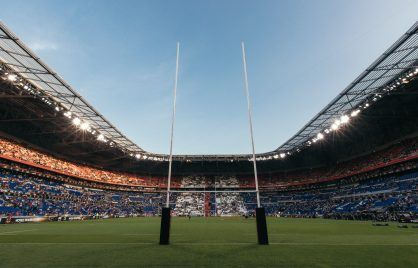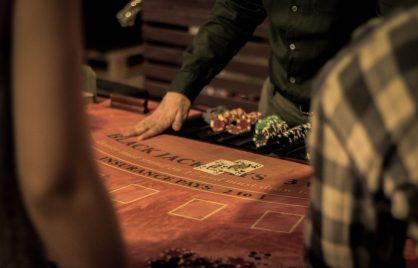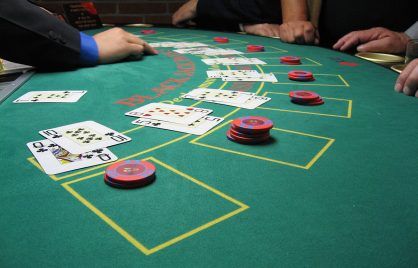How Your Local Grocery Store Is Designed Like A Casino

One we go to a couple times a year for entertainment, the other at least weekly out of necessity. Although the reasons we go to them couldn’t be more different, casinos and supermarkets are extremely similar in design. Thanks to an increased understanding in consumer psychology, both use principles gleaned from the latest research to keep us playing, shopping, and feeling good for longer.
Purposeful Positioning
Even if it might seem like you have free will in where to roam, smart store and casino design makes it predictable where most shoppers and gamblers will go first. In fact, Consumer Behavior expert Vasillis Dalakas, from California State University told us simply: ‘Nothing in grocery stores happens by accident.’
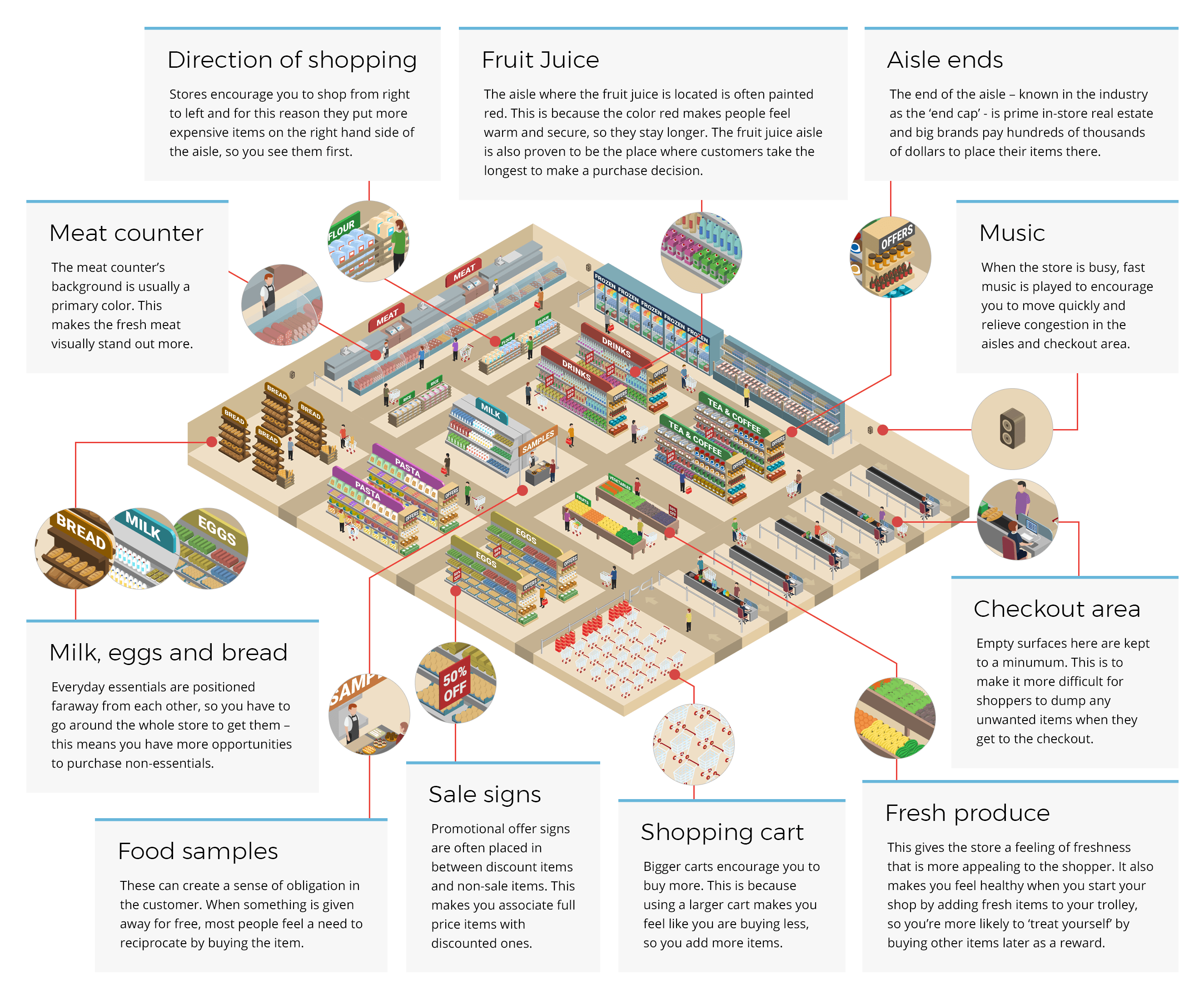
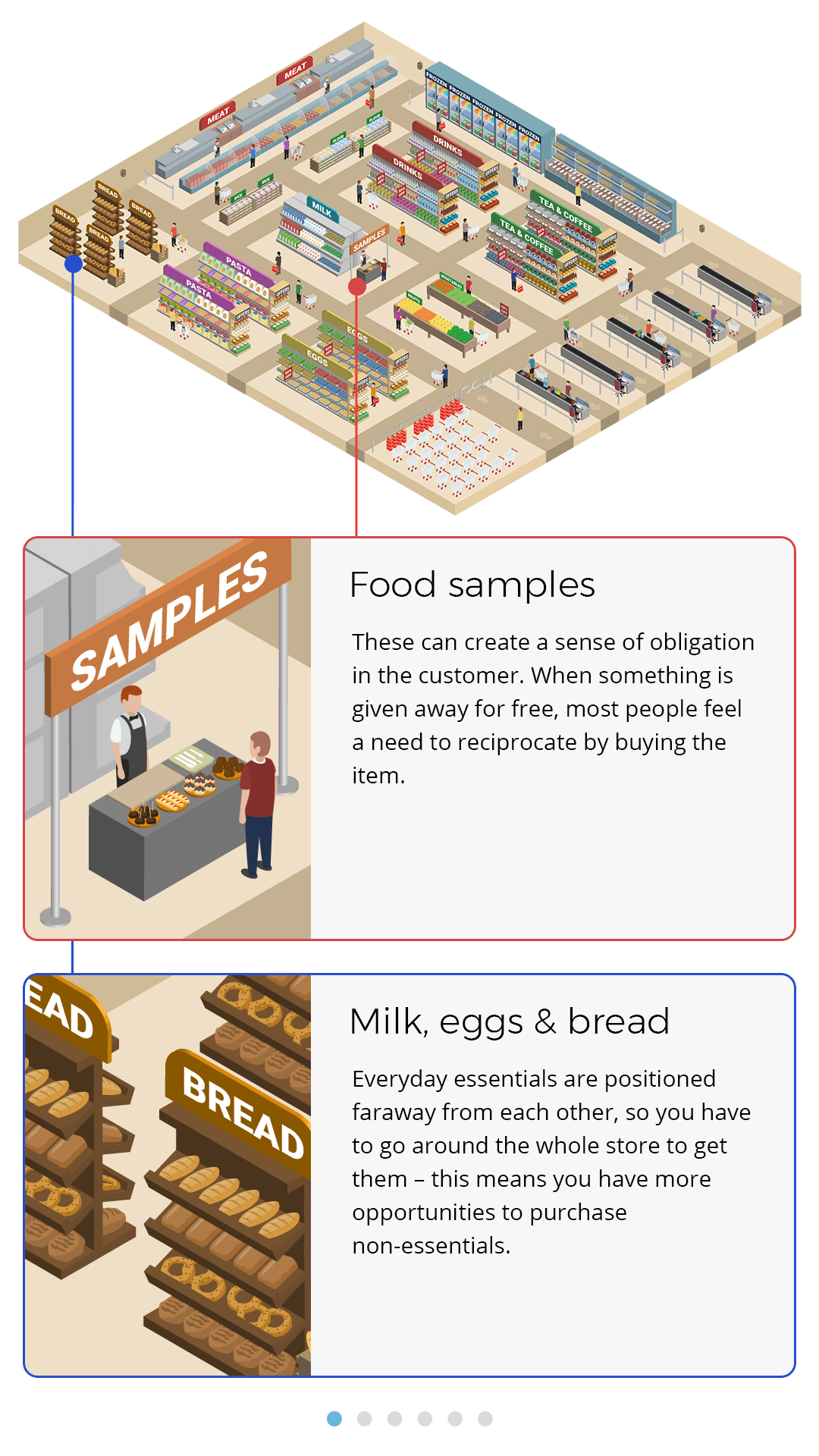
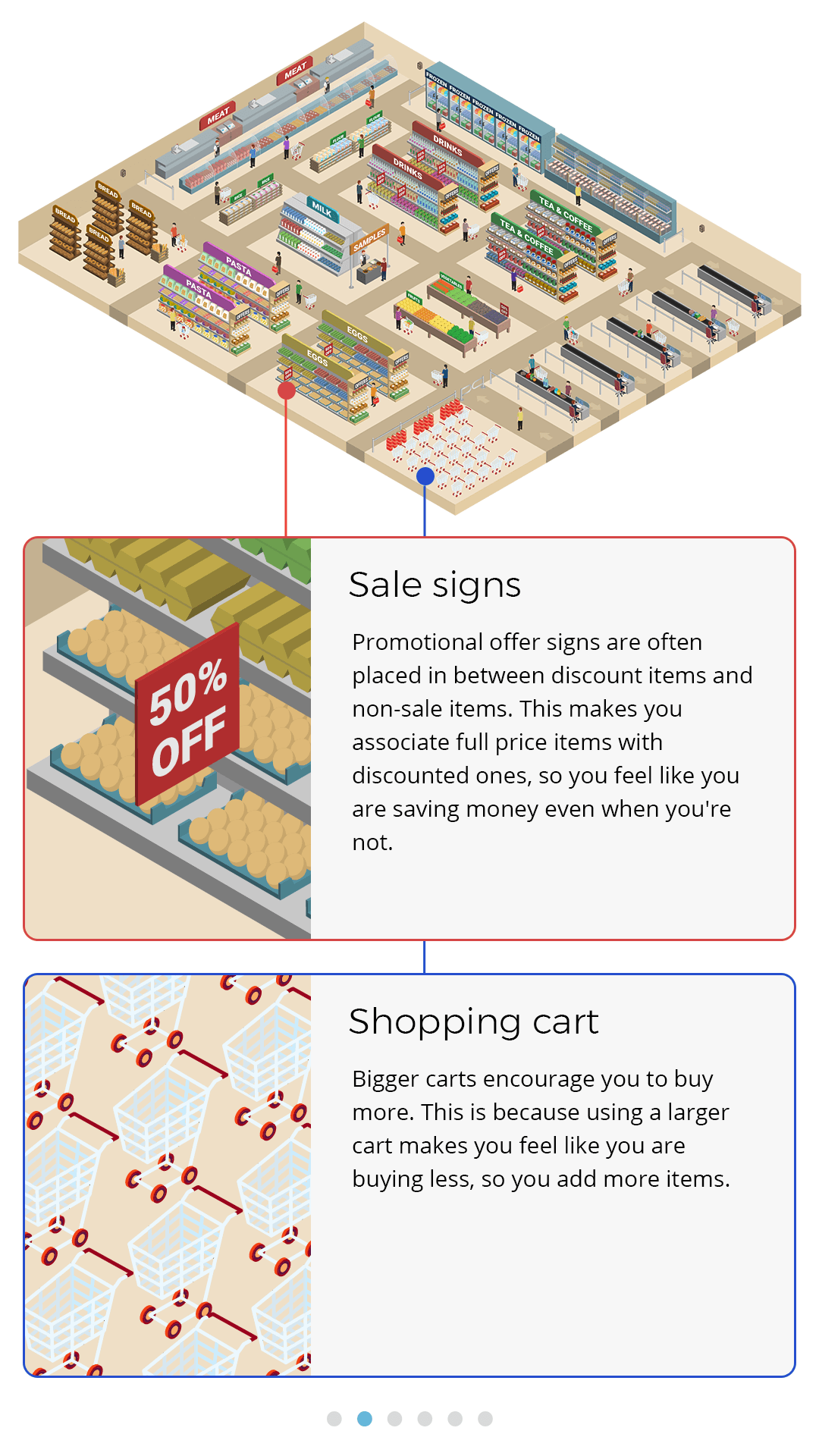
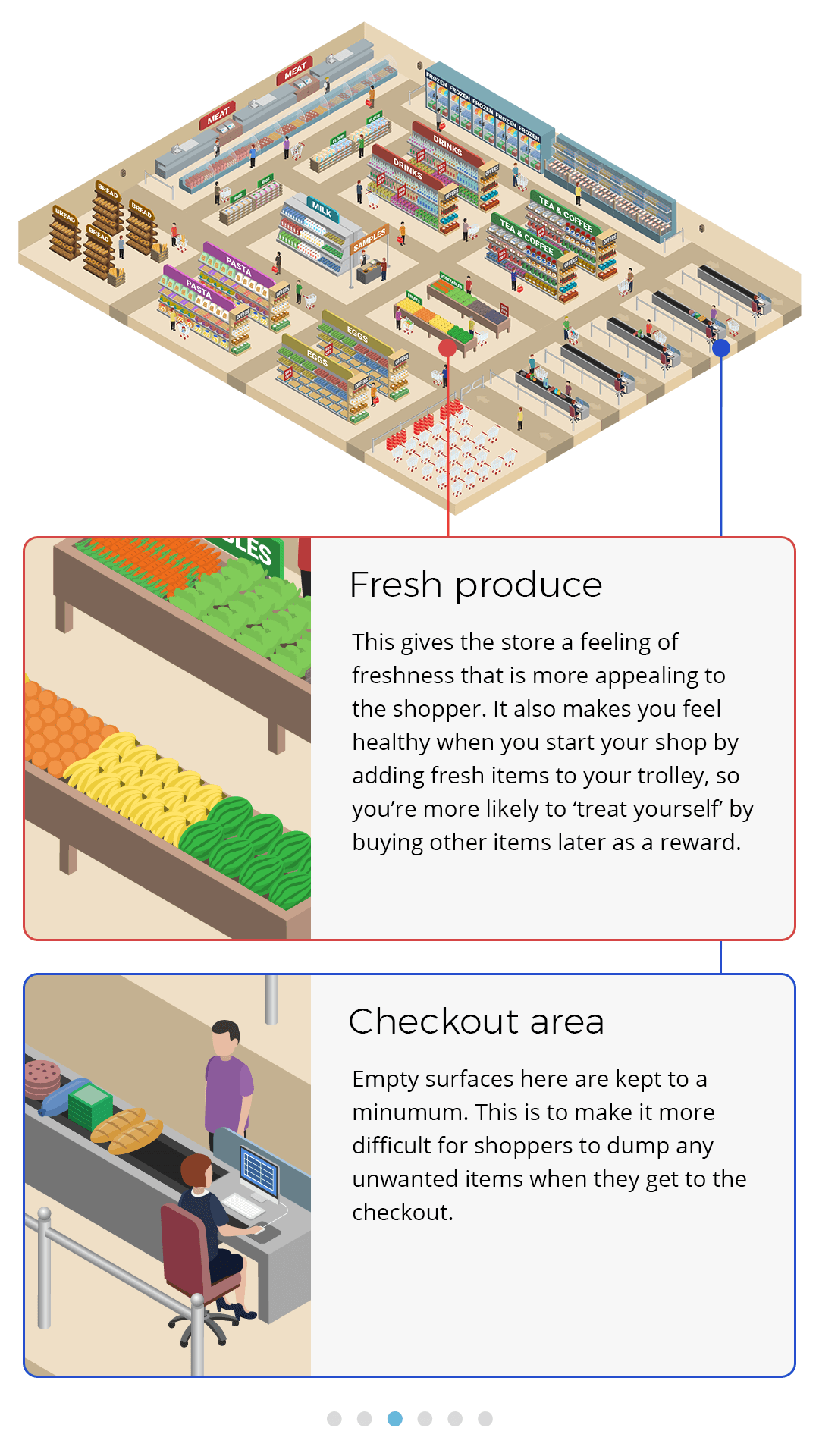
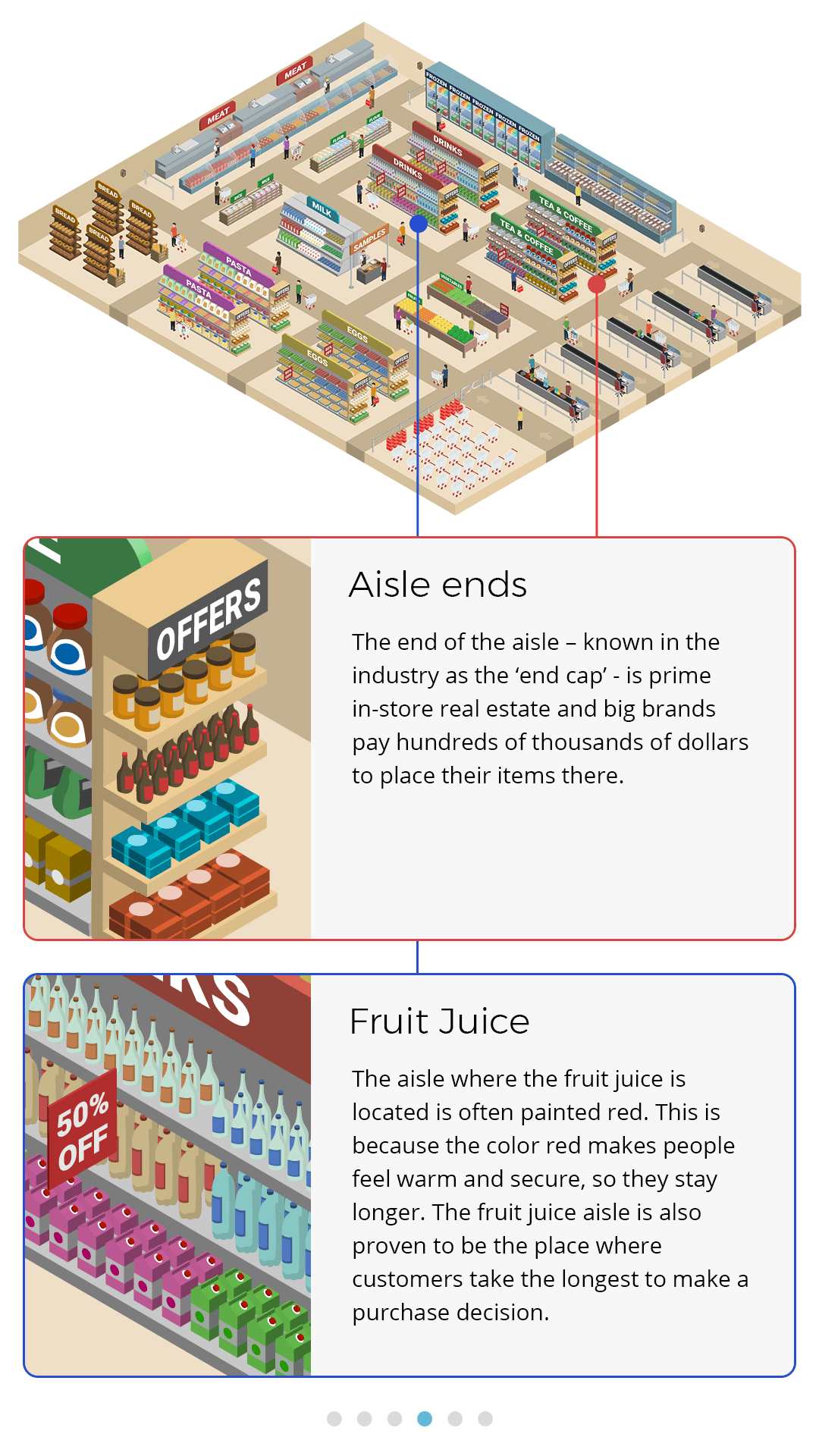
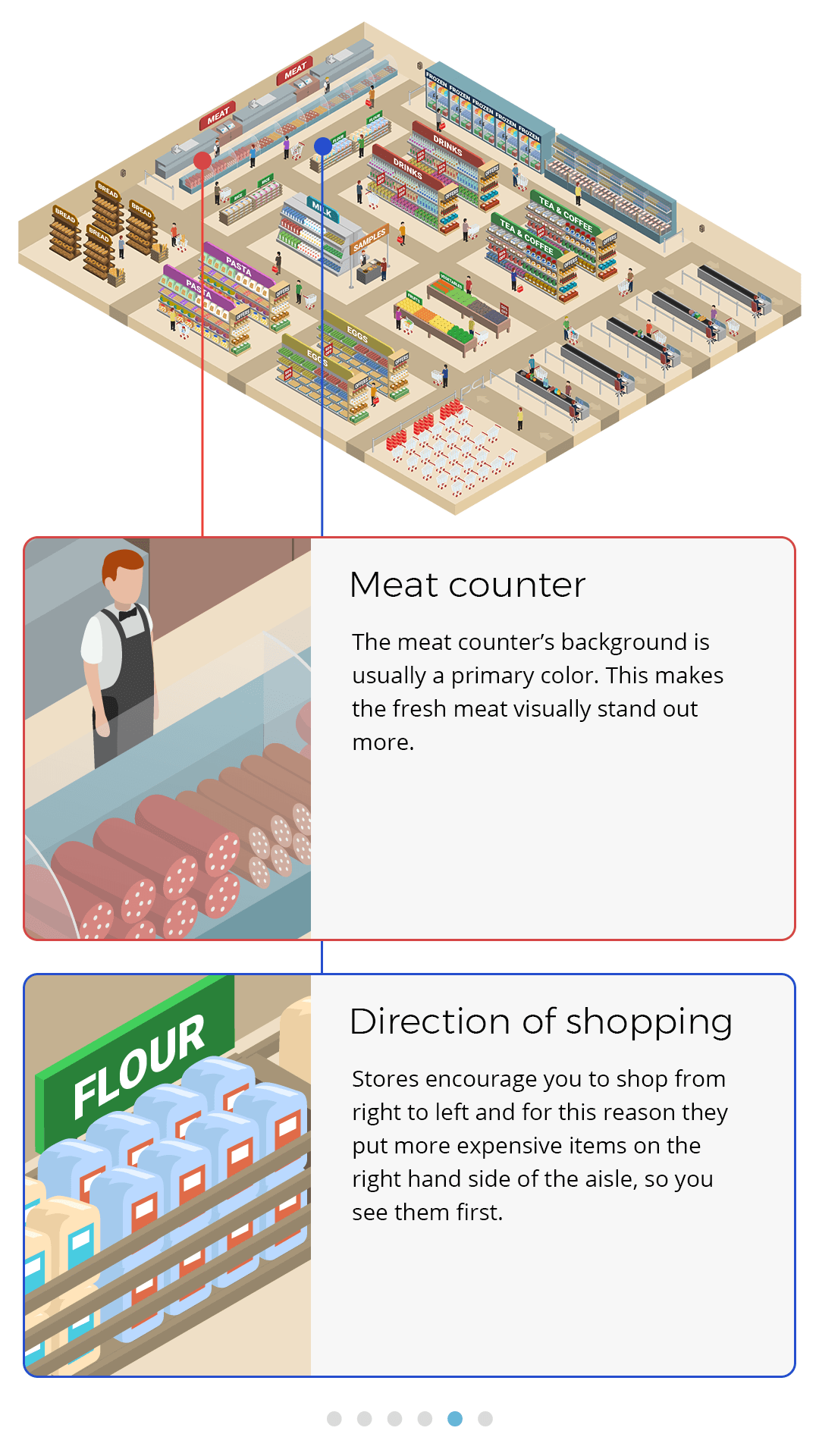
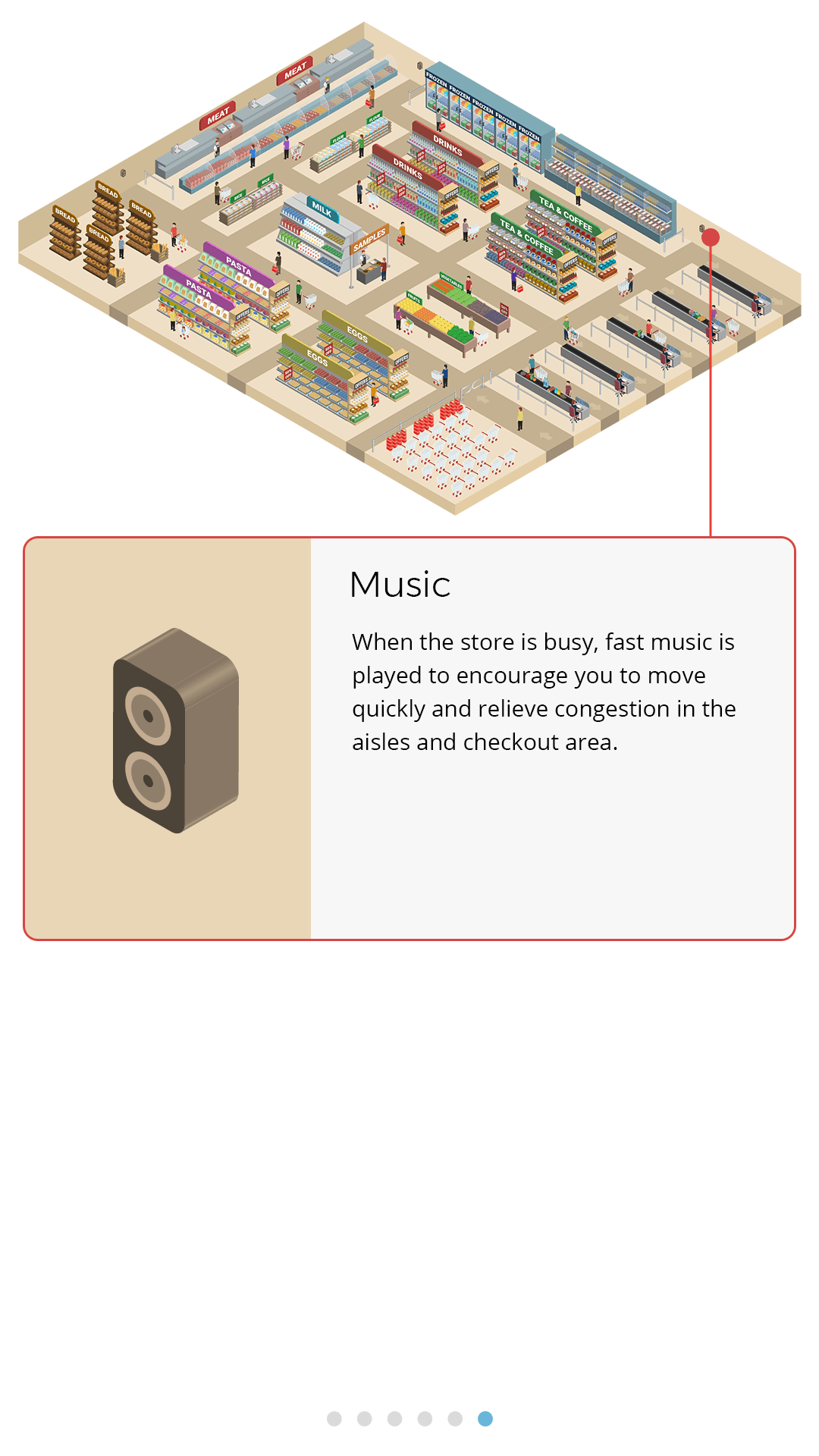
Thanks to research showing that objects to our left catch our attention more than those to our right, grocery stores are encouraged to steer customers in a counterclockwise direction. To pull shoppers in this direction and ensure they keep looking left to the interior of the store, planners put visually catching items (like the floral department or an eye-catching seasonal display) to the right of the entrance.
Staples like bread, milk, eggs, and even the bathrooms are all positioned away from each other and at the store’s furthest reaches, making sure shoppers pass more potential purchases along the way.
In modern casinos, this segmented approach is further exaggerated. High-rollers are generally corralled into one area featuring the higher-limit games while more casual players and hotel guests are diverted through the slots and cheaper table games on their way to and from the elevator, bathroom, and lobby.
Casino layouts also take into account the preferences of different demographics. Slots are the favorite game for a majority of female gamblers, who tend to enjoy playing among tamer crowds. To accommodate this, casinos make sure there are many slots away from heavy foot traffic.
And since having a social experience while playing is important to younger players, many machine-based games are clustered together instead of in long rows to encourage a more social environment.
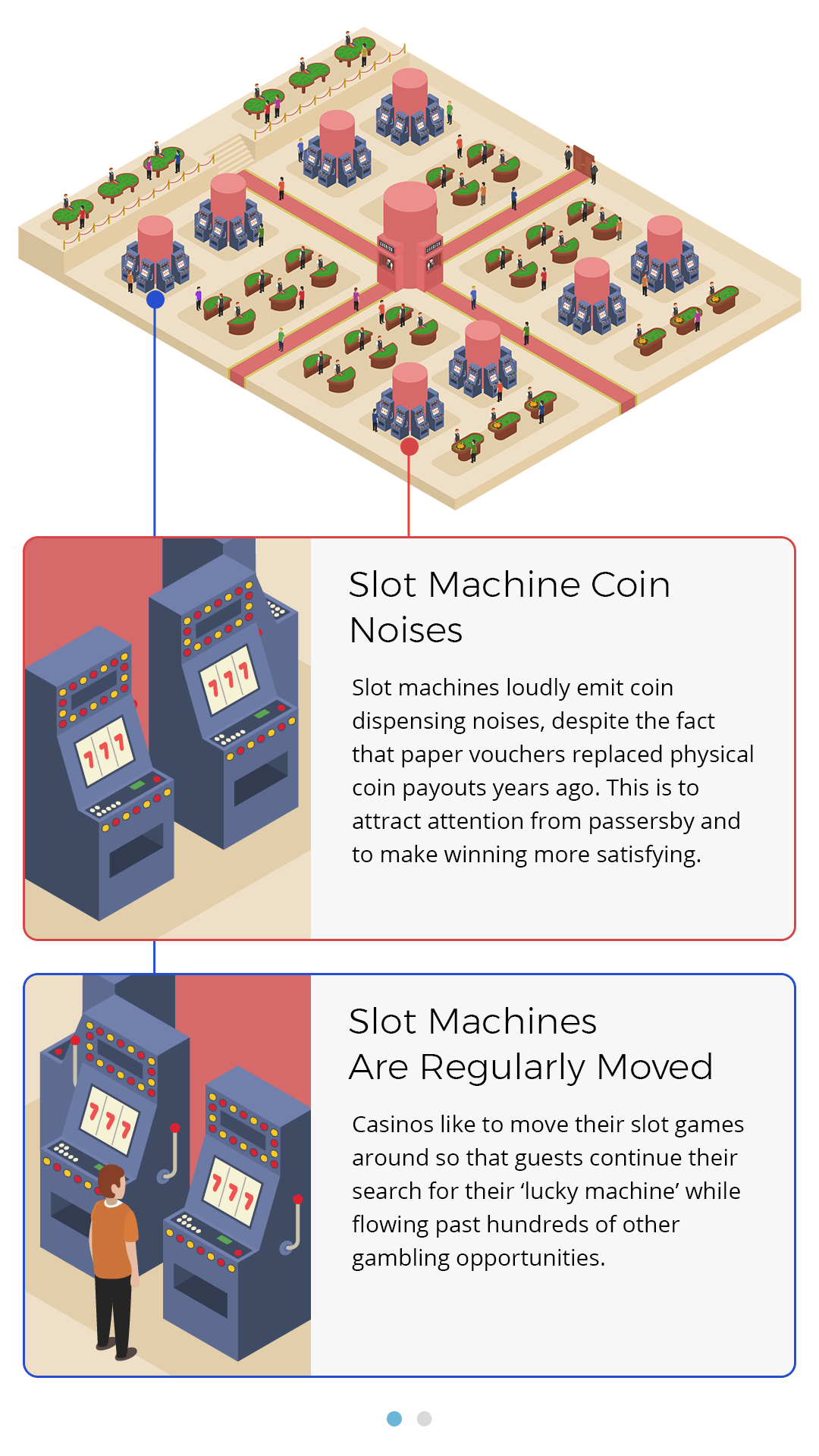
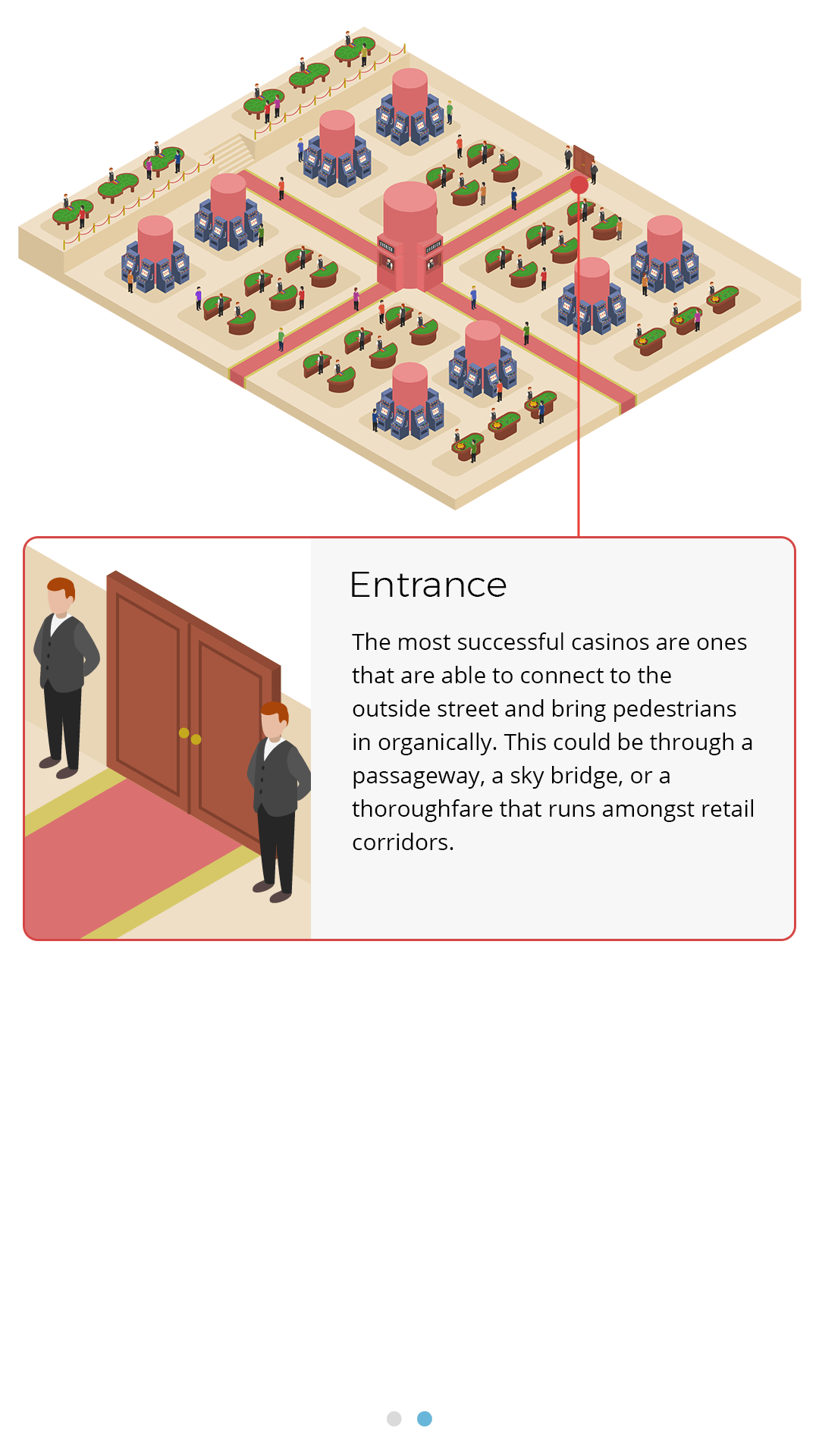
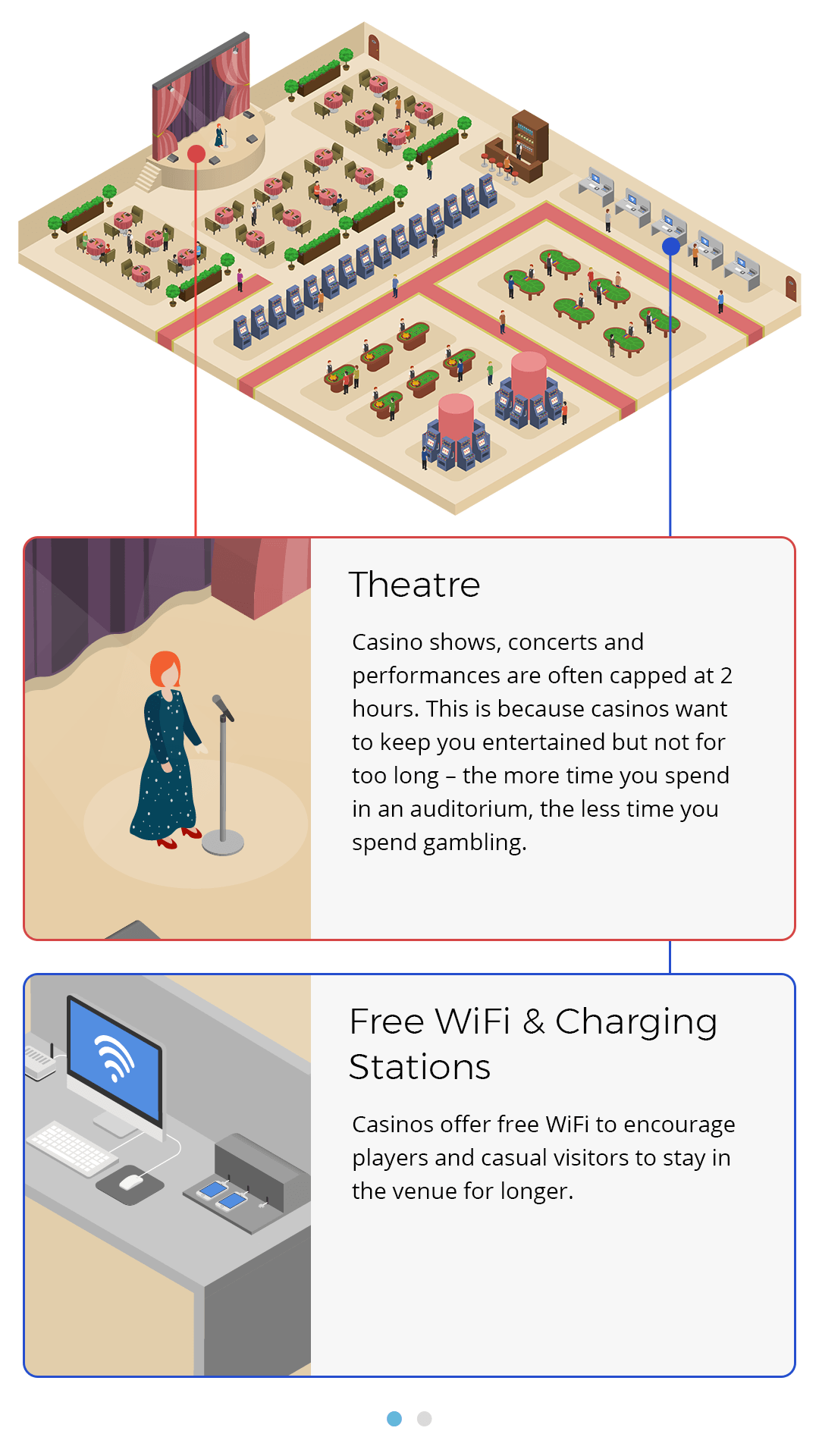
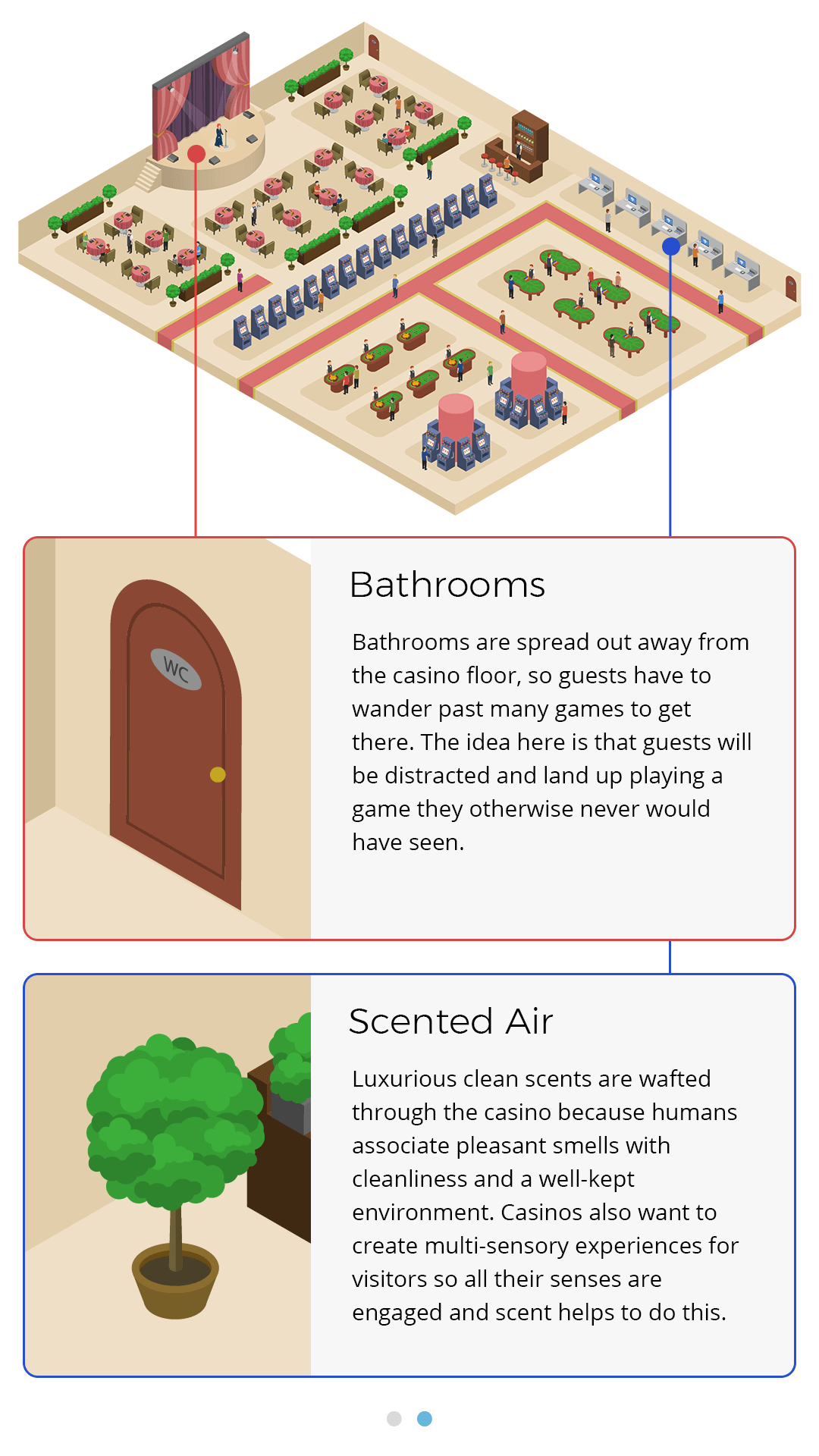
The demographic of the casino’s visitors also influences what games are available and even the lighting of the space.
James Carry, Designer and Principal at interior architecture firm Wilson Associates, who have worked with The Venetian Las Vegas, MGM Macau and Caesar’s Palace told us, “Table games need focused task lighting to keep guests engaged, but not so bright that it distracts from others in the room. In the United States, casinos will average about 85-90% machines versus table games, compared to the 40-50% machine-to-table ratio in Asia.”
A Multi-Sensory Experience
Be it in a supermarket or a casino, none of the six senses have gone ignored by designers. Grocery stores today actually share many of the principles casinos once held as gospel: limited natural light, limited windows, and few (if any) clocks. Instead of the time or sunlight, at the front of most grocery stores the senses are bombarded with the sights, smells, and sounds of the three most stimulating departments: floral, produce, and the bakery.
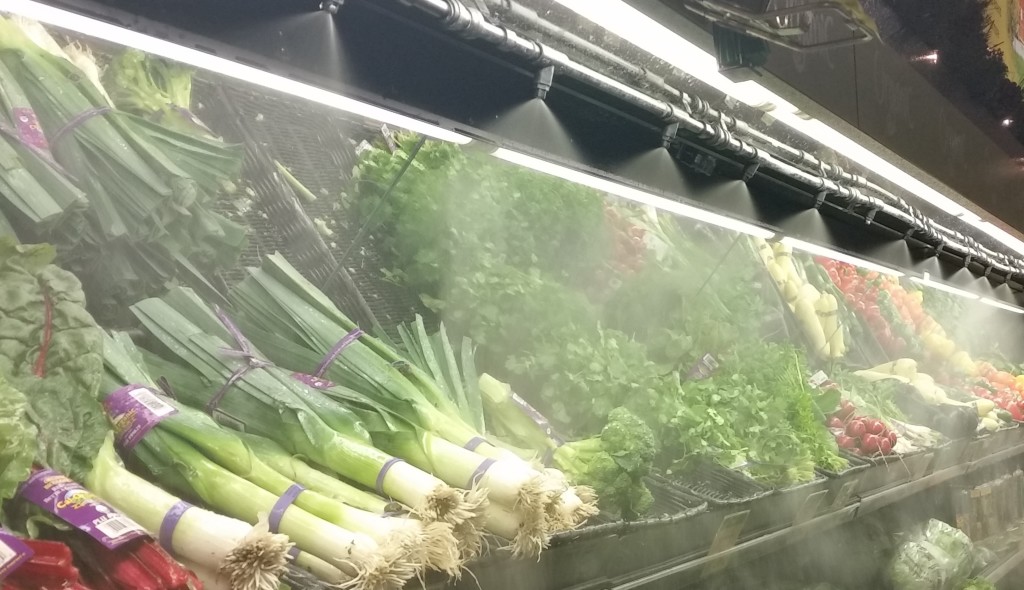
Produce’s bold colors are enhanced by special lighting and sprays of mist (which actually make it spoil faster in lieu of making it appear fresher). This produce first has to pass high standards of appearance to even make it to the shelf. For instance, bananas generally have a yellow closer to Pantone 12-0752 after research showed that customers were more attracted to a ‘buttercup’ color than the slightly more vibrant yellow of Pantone 13-0858.
Even the music played at the grocer isn’t by accident. One landmark study showed a 38% increase in sales for grocery stores that played music compared to those that didn’t. All these positive sensations work together to put shoppers in a positive, healthy-feeling mood that whets the appetite.
Even though there might not be a ‘Fresh Casino’ scent from Yankee Candle anytime soon, gamblers are also very responsive to pleasant smells, whether they realize it or not. Customer insight company, Motionloft says, “Scent promotes a sense of luxury. Casinos that invest in creating a sensory-focused environment activate how a person feels when they spend time inside a property, not just what a person gets out of being there.”
One study looked at the impact of releasing a scent deemed ‘pleasant’ in different slot machine areas. Compared to control periods where no odor was released, the scented area turned 45% more profit, suggesting that people are more likely to hang around and gamble in an area that is olfactory-pleasant.
That effect is further enhanced when players also hear the sound of clanging coins from machines all around them. Motionloft point out, “Slot machines loudly emit coin dispensing noises, despite the fact that paper vouchers replaced physical coins in the early noughties.”
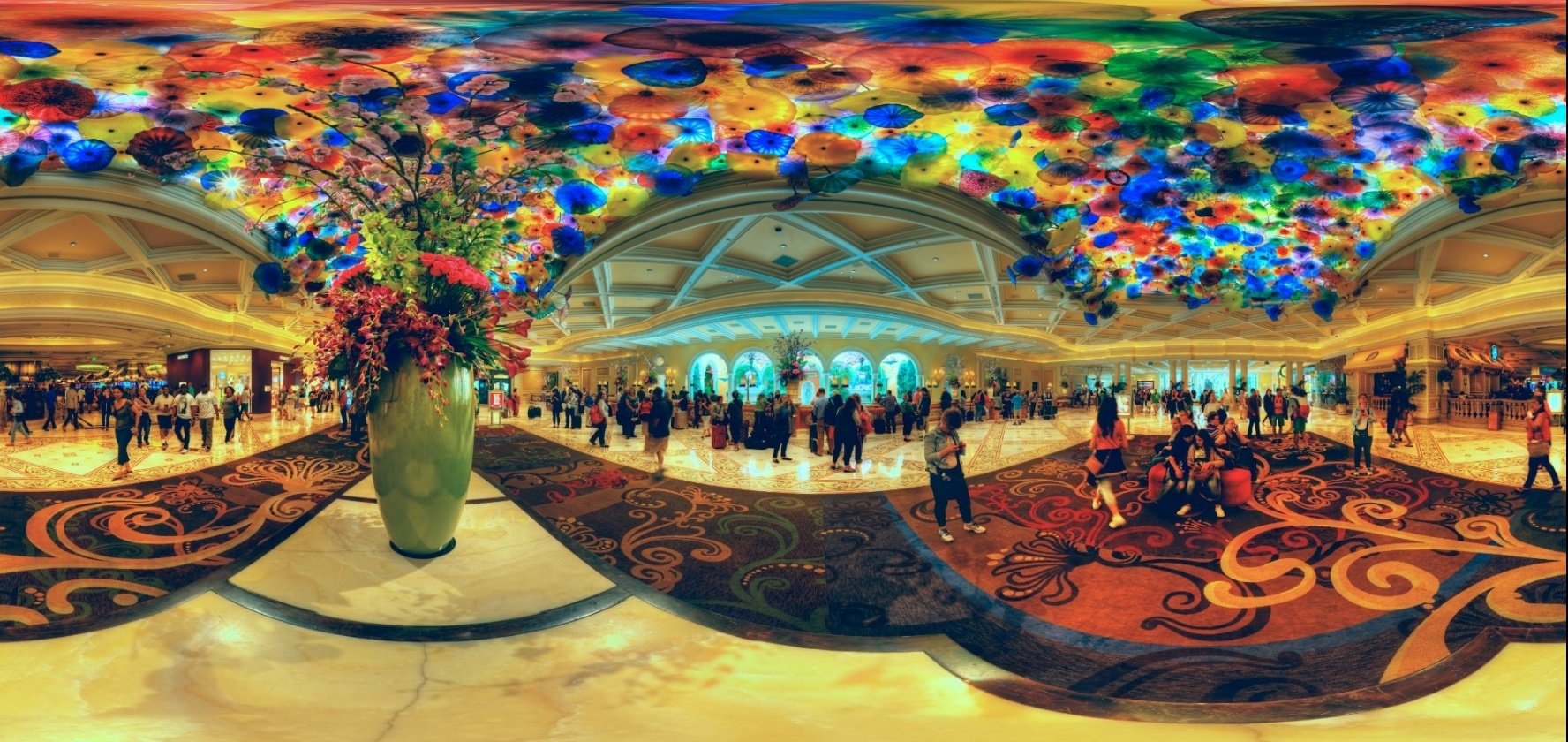
Visually, we are experiencing a renaissance in casino design. Long gone are the dark and dingy settings with mazes of identical slot machines. As famous designer Roger Thomas (credited for The Wynn’s recent major and successful redesign) said to The New Yorker: “People tend to take on the characteristics of a room. They feel glamorous in a glamorous space and rich in a rich space. And who doesn’t want to feel rich?”
Thomas and other modern casino designers create this opulent environment by breaking many of casino design’s old rules by featuring high ceilings, natural sunlight, elaborate artwork, and even ornate decorative clocks, all which aim to leave gamblers feeling fresh and in a mood to stay and play longer.
James Carry said, “There are a lot of widely held theories out there about design tricks used to subconsciously encourage players to play more – low ceilings, poor lighting, no windows – but our approach is more positive; we try to create spaces where people feel comfortable.”
He continued, “Our designs include a ring of activity surrounding the casino floor that includes storefronts, restaurants, and other activity zones to help layer the spaces; we never put gaming in a dead end”
The Outside In
The best planners know that first impressions last and put a focus on what guests see when they enter. In an attempt to slow them down to look at more potential purchases, grocers place fresh samples and out-of-the-box products shoppers can play with right upfront. One-way entrances and exits (with the checkout aisles in between) make it difficult to quickly enter and leave as well. Even without venturing down any aisles on their way to the exit, shoppers are likely to see many endcap shelves, where products sell eight times as fast.
Old-school casino philosophy dictated bombarding patrons with gambling the second they entered, accomplished by placing machines immediately inside the front entrance. Today’s casino entrances are more reminiscent of grand hotel lobbies with their ornate artwork and open layouts. In a recent redesign of Vegas’ Bellagio, a massive Dale Chihuly-designed sculpture hung from the ceiling, making gamblers feel welcome and invited to stay and play in a relaxed space. The position of casino entrances are also designed to ‘catch’ outside passersby from the street or other pedestrian walkways like skywalks.
Differing Demographics
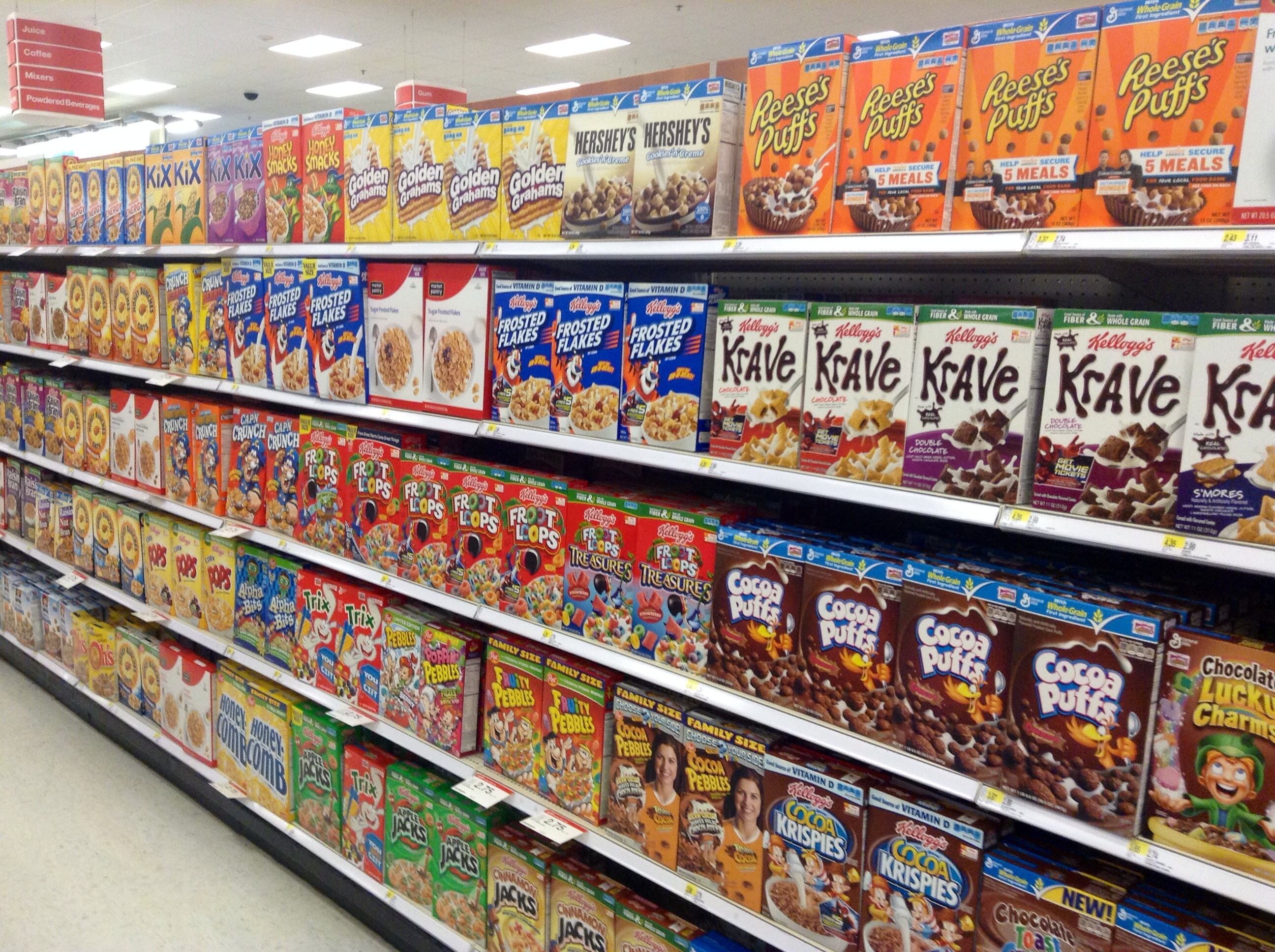
A challenge both casinos and grocery stores have is to try and appeal to wide varieties of budgets and demographics. At groceries, aisles that are 6+ shelves high allow plenty of room for a range of differently-priced products. Where items end up is no accident, with the higher-priced brand names situated just at eye-level and cheaper off-brands down low where they are harder to see. One exception is with children’s cereals, which live right at eye-level where hungry and persuasive kids see them best.
Casinos are facing a massive shift in clientele as their biggest money-making demographics, such as female slot players aged 55-60, are getting older. This has led to a new focus on millennials, 39% of which (in America) already visit casinos on a regular basis. To appeal to their preferences, designers are incorporating more tech-friendly elements like Wi-Fi and charging stations, re-positioning layouts to be more social-friendly, and offering entertainment options like shows and lounges integrated into the casino floor.
People and their tastes will always evolve, making the creation of the perfect store or casino layout an ever-moving target. These changes of course will always aim to do one thing: make us spend more money (although there are ways we can get around this and save money on our grocery bills). This is why it’s important for us all to be aware that whether we are looking for jalapenos or for jackpots, we are less in control of our purchasing decisions than we think.

Other sources:
https://www.newyorker.com/magazine/2012/03/26/royal-flush-2
James Carry, Wilson Associates, wilsonassociates.com
Daniel Malak, Motionloft, motionloft.com
Vassilis Dalakas Ph.D., Consumer Behavior Specialist, California State University, csusm.edu
Dow Schull, N 2014 Addiction by Design: Machine Gambling in Las Vegas, Princeton University Press
Eyal, N 2014 Hooked: How to Build Habit-Forming Products, Portfolio Penguin
Friedman, B 2000 Designing Casinos to Dominate the Competition, Institute for the Study of Gambling and Commercial Gaming
Venturi, R 1972 Learning from Las Vegas, MIT Press
Milliman, R 1982 Using Background Music to Affect the Behavior of Supermarket Shoppers, American Marketing Association
Hirsch, A 1995 Effects of Ambient Odors on Slot-Machine Usage in a Las Vegas Casino, Psychol. Mark., 12: 585–594.
Lindstrom, M 2012 Brandwashed: Tricks Companies Use to Manipulate Our Minds and Persuade Us to Buy, Kogan Page
